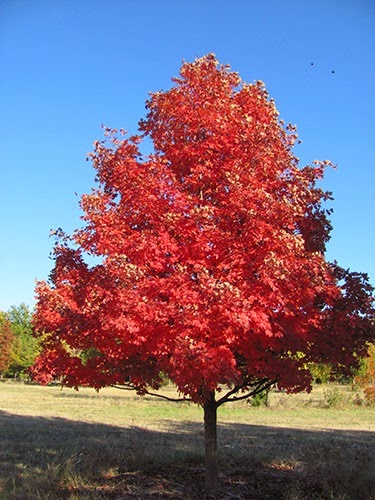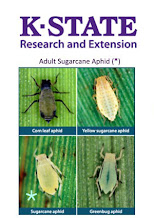Tips and guidelines for using crop residue for your cow herd!
Sandra
L. Wick, Crop
Production Agent
 The question that
always arises, is the concern with compaction as a management component. Grazing livestock can cause soil compaction,
but generally the compaction is shallow and temporary. Soil moisture and
soil type are the two main factors which affect the severity of the compaction.
Moist soils with significant clay content are most prone to compaction and are
often referred to as “tight” soils. Completely saturated soils or dry soils do
not compact. The winter freeze/thaw and spring tillage will eliminate most
compaction created by livestock.
The question that
always arises, is the concern with compaction as a management component. Grazing livestock can cause soil compaction,
but generally the compaction is shallow and temporary. Soil moisture and
soil type are the two main factors which affect the severity of the compaction.
Moist soils with significant clay content are most prone to compaction and are
often referred to as “tight” soils. Completely saturated soils or dry soils do
not compact. The winter freeze/thaw and spring tillage will eliminate most
compaction created by livestock.
K-State Research and Extension has an excellent (free of charge) resource, “KSU Forage Notebook” available. This is an extensive resource for managing a wide variety of forages with topics such as grasses/legumes, management guidelines, summer annual forages along with musk thistle control and grazing corn residue, just to name a few. This is available online or at any of our Post Rock Extension District Offices.
Post Rock Extension District of K-State Research
and Extension serves Jewell, Lincoln, Mitchell, Osborne, and Smith counties.
Sandra may be contacted at swick@ksu.edu or by calling Smith Center, 282-6823, Beloit
738-3597, Lincoln 524-4432, Mankato 378-3174, or Osborne 346-2521. Join us on Facebook at “Post Rock Extension”
along with our blog site at “postrockextension.blogspot.com. Also
remember our website is www.postrock.ksu.edu and my twitter account is @PRDcrops.
Kansas has an abundance of crop residue available
for grazing in late fall and winter. However, the location of fields in
relation to cattle, the lack of shelter or appropriate fencing, and water
availability often prevent grazing of many fields. Despite these limitations,
crop residue grazing has become an integral part of many cattle operations,
primarily as a feed resource for maintaining the breeding herd during winter or
putting weight on cull cows.
Weather can be the most important factor
in successfully grazing crop residue. Snow cover can reduce or eliminate
access to crop residue. Mud may make grazing difficult and may result in
decreased performance and greater waste of forage due to trampling. Corn stalk
fields grazed shortly after harvest are higher in nutrient content than fields
grazed 60 days after harvest. This indicates that there is some weathering loss
of nutrients. The greatest nutrient loss appears in the husk and leaf and the
loss is primarily a loss in energy content.
Cows grazing corn stalks will consume 25 to
30 percent of the available residue in 30 to 100 days, depending on stocking
rate. This can
leave enough material to prevent soil erosion. Cattle will select and eat the
grain first, followed by the husk and leaf, and finally the cob and stalk. Also,
as the stocking rate (number of cows per acre) is increased, the
nutrient content of the remaining residue declines much quicker because the
grain and husk are being removed at a much faster rate.
Salt, phosphorus, calcium, and vitamin A
supplements are recommended for all cattle grazing dormant winter range and
crop residues. These supplements can be supplied free-choice to the cattle.
As long as cattle have grain to select in a
cornstalk field, they will consume a diet that is probably above 7 percent
crude protein and as high as 70 percent TDN. This will exceed the protein
and energy needs of an 1100-pound cow in mid-gestation. Spring calving cows are
at mid-to-late gestation during fall and early winter; therefore, their
nutrient requirements match well with a crop residue grazing program.
Lactating cows, such as fall calving cows
grazing crop residue, need to be managed carefully. As long as lactating cows
have grain to select in the field, their energy needs should be met. If the
breed type has a high milk potential, protein supplementation is necessary even
if the cattle have grain to eat.
 The question that
always arises, is the concern with compaction as a management component. Grazing livestock can cause soil compaction,
but generally the compaction is shallow and temporary. Soil moisture and
soil type are the two main factors which affect the severity of the compaction.
Moist soils with significant clay content are most prone to compaction and are
often referred to as “tight” soils. Completely saturated soils or dry soils do
not compact. The winter freeze/thaw and spring tillage will eliminate most
compaction created by livestock.
The question that
always arises, is the concern with compaction as a management component. Grazing livestock can cause soil compaction,
but generally the compaction is shallow and temporary. Soil moisture and
soil type are the two main factors which affect the severity of the compaction.
Moist soils with significant clay content are most prone to compaction and are
often referred to as “tight” soils. Completely saturated soils or dry soils do
not compact. The winter freeze/thaw and spring tillage will eliminate most
compaction created by livestock.
On average, the energy and protein in the
leaves of milo stubble appear adequate for cows in mid-to- late
gestation, but not for heifers in late gestation. Monitor body condition of mature, gestating
cows grazing milo stubble. If they appear to be losing condition, supplement
protein. Because of the milo grain’s hard outer coat, it is not utilized as
well as corn grain by the cow, but cows can still experience acidosis (founder
in milo fields that have excess milo heads left in the field after harvest). The table provides nutrient values of corn
and milo stalks.
K-State Research and Extension has an excellent (free of charge) resource, “KSU Forage Notebook” available. This is an extensive resource for managing a wide variety of forages with topics such as grasses/legumes, management guidelines, summer annual forages along with musk thistle control and grazing corn residue, just to name a few. This is available online or at any of our Post Rock Extension District Offices.
If you have further questions on grazing
crop residue, contact Sandra at any Post Rock Extension District Office in
Beloit, Lincoln, Mankato, Osborne or Smith Center.










